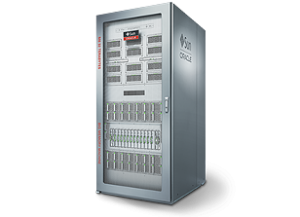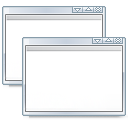 I usually don’t write about news, or in this case olds, but in this case the technology is amazing enough to merit mention. As most of the tech world knows, Oracle CEO Larry Ellison stepped down from his post earlier this week, after a 37 year career leading the company to become one of the dominant players in the IT industry. With all of the publicity and commotion that this move made, it had completely overshadowed an even more titanic shift happening in the database world: Oracle’s June launch of its In-Memory Database for 12c.
I usually don’t write about news, or in this case olds, but in this case the technology is amazing enough to merit mention. As most of the tech world knows, Oracle CEO Larry Ellison stepped down from his post earlier this week, after a 37 year career leading the company to become one of the dominant players in the IT industry. With all of the publicity and commotion that this move made, it had completely overshadowed an even more titanic shift happening in the database world: Oracle’s June launch of its In-Memory Database for 12c.
Continue reading
Tag Archives: Software Sagacity
Elements of Enterprise-Grade Web Frameworks – Part 5: Lazy-Loaded Data Grids
![]() The lazy-loaded data grid has been a key feature of desktop applications, and is slowly making its way into web applications. Lazy-loading enables clients to view large amounts of data by initially loading only a small portion of the results. As the client scrolls toward the bottom of the screen, the next set of data is automatically loaded from the server.
The lazy-loaded data grid has been a key feature of desktop applications, and is slowly making its way into web applications. Lazy-loading enables clients to view large amounts of data by initially loading only a small portion of the results. As the client scrolls toward the bottom of the screen, the next set of data is automatically loaded from the server.
Continue reading
Elements of an Enterprise-Grade Web Framework – Part 3: Data-Bound Drop-downs
 Drop-down list-of-values populated by database tables are another important component of enterprise-grade web frameworks. Although most frameworks do support them through one technique or other, the ease of implementation is key in this often-used feature.
Drop-down list-of-values populated by database tables are another important component of enterprise-grade web frameworks. Although most frameworks do support them through one technique or other, the ease of implementation is key in this often-used feature.
Continue reading
Elements of an Enterprise-Grade Web Framework – Part 2: Existing Database Schemas
 A powerful database schema is one of the key components of an enterprise application. Using the database to enforce business logic and ensure data integrity enables both flexibility and scalability in application design. By coding business logic in both the database layer and application layer, the database has the flexibility to then also be used by other applications and processes without fear of corrupting data. In addition, other systems can take advantage of stored procedures or views that make future development easier, instead of the platform lock-in created by storing all business logic in the application itself.
A powerful database schema is one of the key components of an enterprise application. Using the database to enforce business logic and ensure data integrity enables both flexibility and scalability in application design. By coding business logic in both the database layer and application layer, the database has the flexibility to then also be used by other applications and processes without fear of corrupting data. In addition, other systems can take advantage of stored procedures or views that make future development easier, instead of the platform lock-in created by storing all business logic in the application itself.
Continue reading
The Grass Is Always Greener On the Next Framework
 Over the past 20 years, Microsoft has been releasing a multitude of frameworks and application development platforms. Each framework has a unique set of constructs, and often requires developers to learn a new language in order to take advantage of its benefits. Unfortunately, due to the major structural differences between the languages, most old applications need to be completely rewritten to gain access to the new features. This leaves many to wonder – is it worth the effort?
Over the past 20 years, Microsoft has been releasing a multitude of frameworks and application development platforms. Each framework has a unique set of constructs, and often requires developers to learn a new language in order to take advantage of its benefits. Unfortunately, due to the major structural differences between the languages, most old applications need to be completely rewritten to gain access to the new features. This leaves many to wonder – is it worth the effort?
Continue reading







